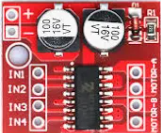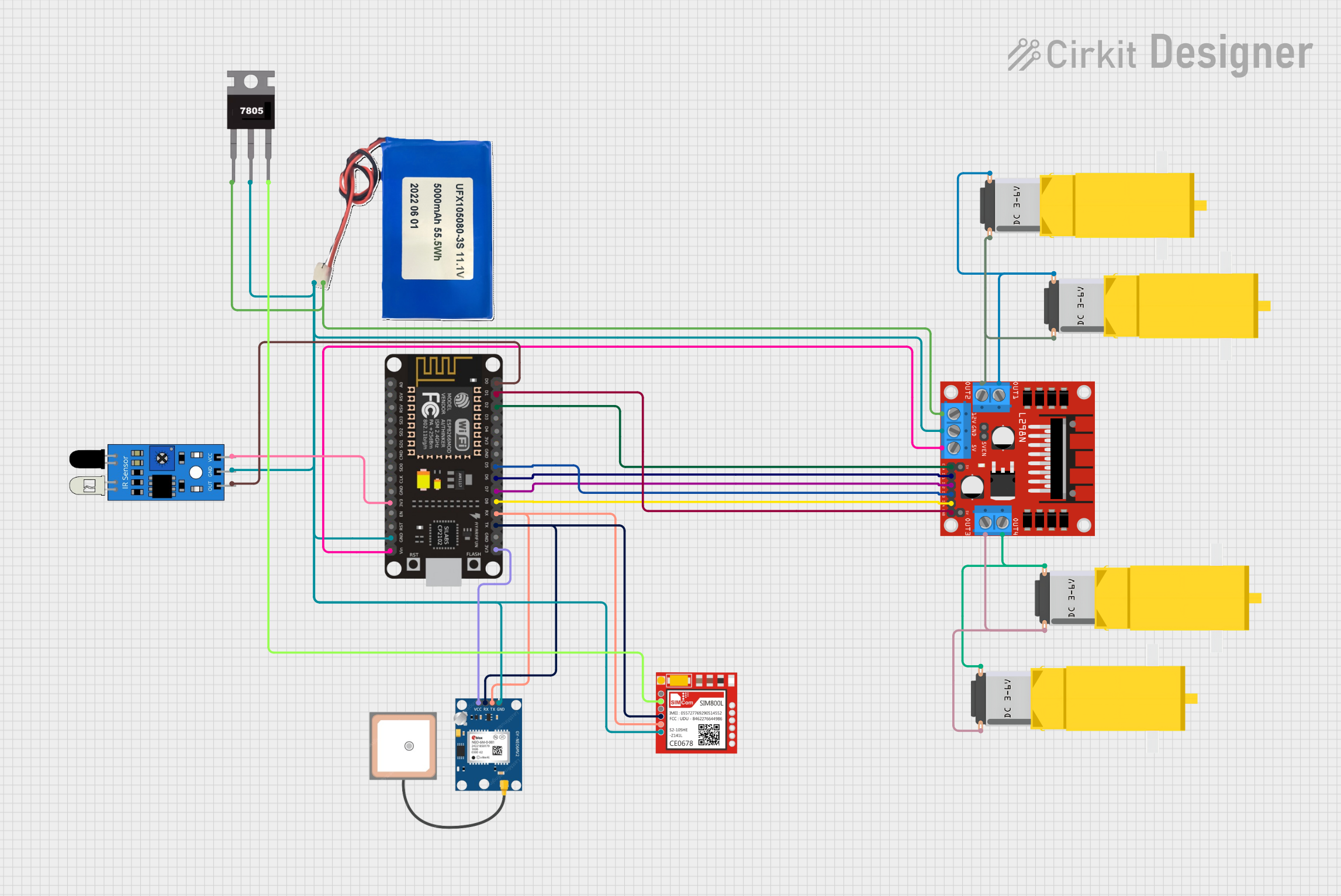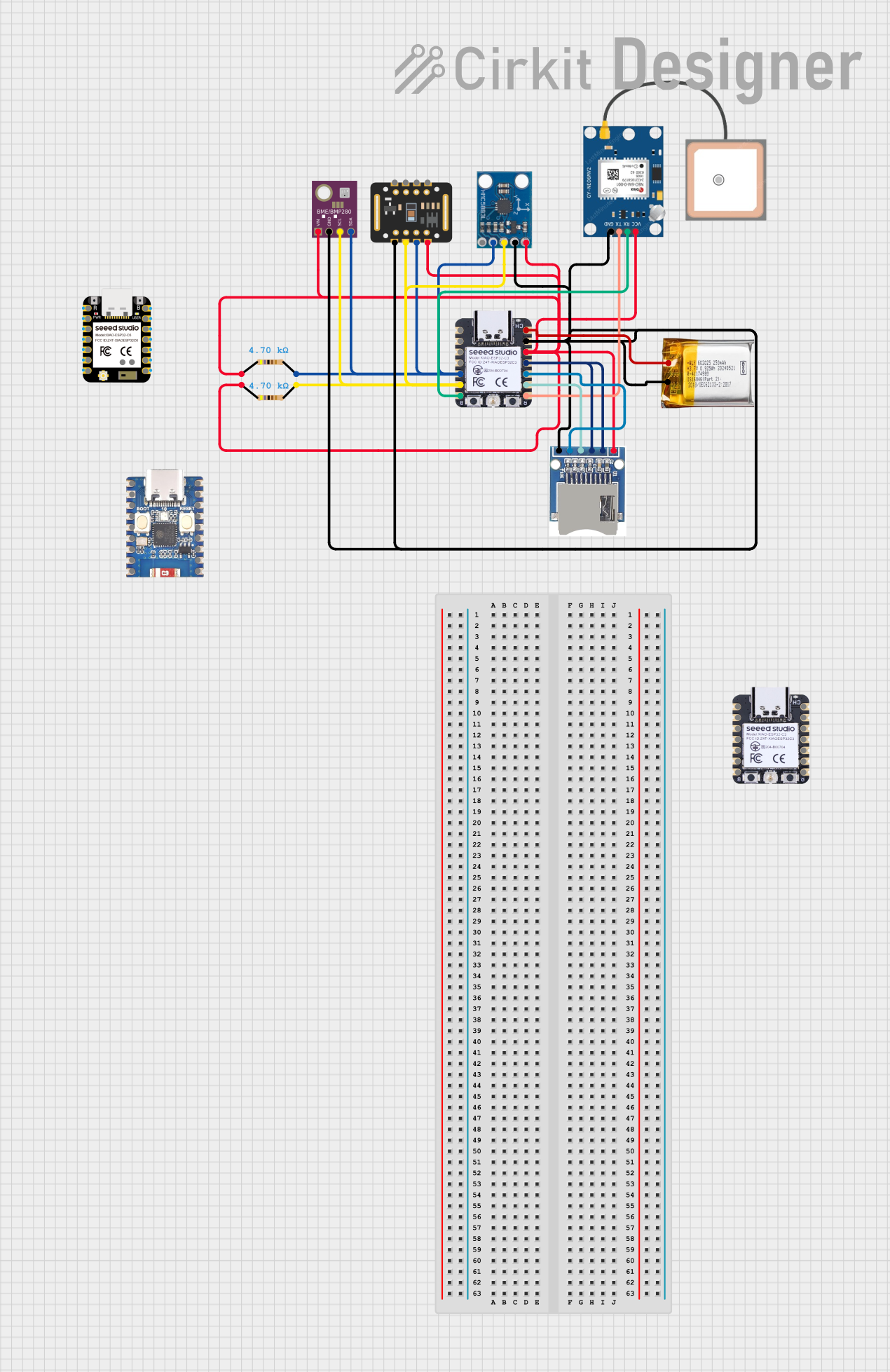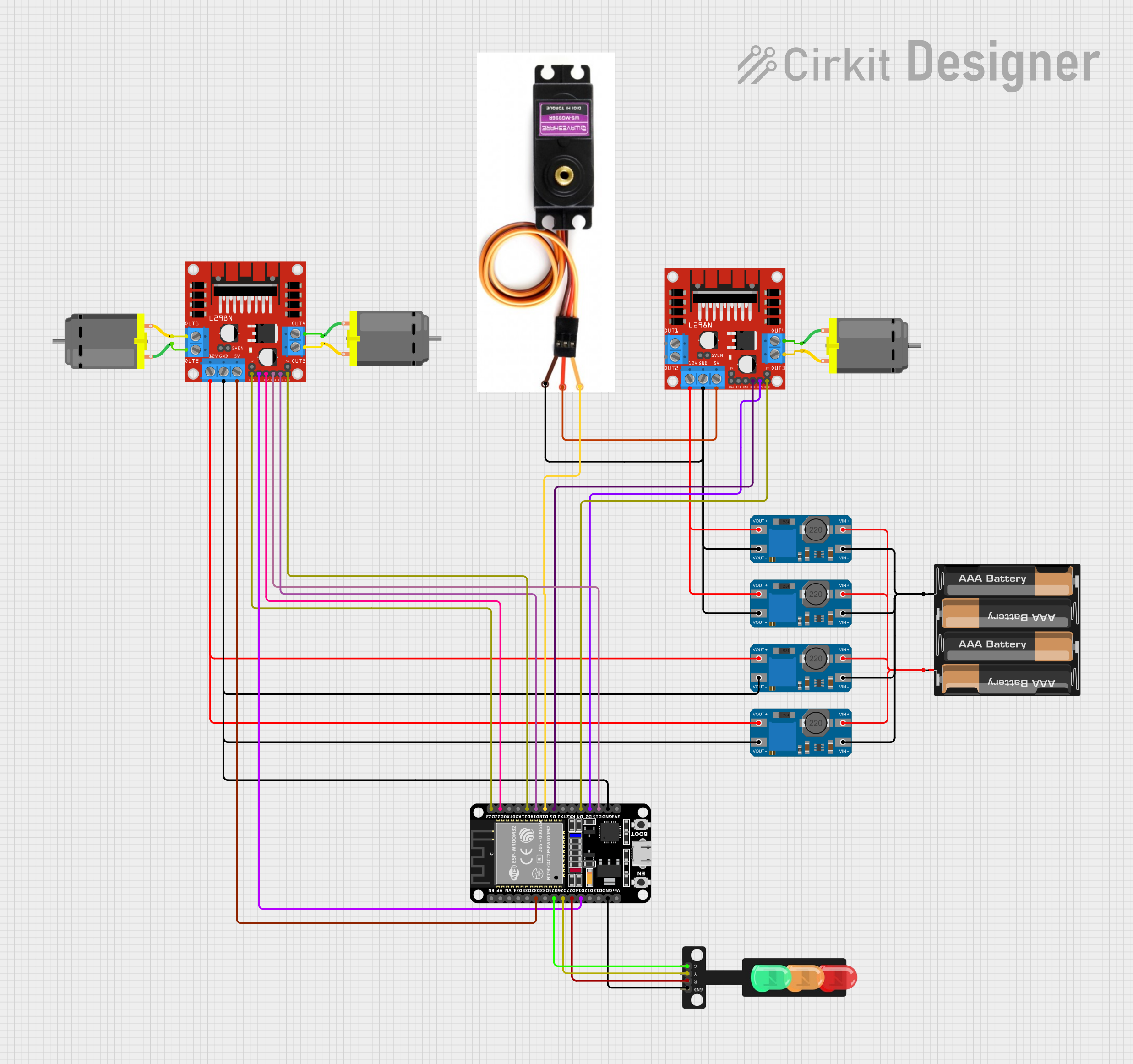
How to Use MX1508: Examples, Pinouts, and Specs

 Design with MX1508 in Cirkit Designer
Design with MX1508 in Cirkit DesignerIntroduction
The MX1508 is a dual operational amplifier (op-amp) designed for low-power applications. It features high gain, low noise, and excellent stability, making it ideal for signal conditioning, amplification, and other analog signal processing tasks. Its compact design and efficient performance make it a popular choice in audio systems, sensor signal amplification, and precision measurement circuits.
Explore Projects Built with MX1508

 Open Project in Cirkit Designer
Open Project in Cirkit Designer
 Open Project in Cirkit Designer
Open Project in Cirkit Designer
 Open Project in Cirkit Designer
Open Project in Cirkit Designer
 Open Project in Cirkit Designer
Open Project in Cirkit DesignerExplore Projects Built with MX1508

 Open Project in Cirkit Designer
Open Project in Cirkit Designer
 Open Project in Cirkit Designer
Open Project in Cirkit Designer
 Open Project in Cirkit Designer
Open Project in Cirkit Designer
 Open Project in Cirkit Designer
Open Project in Cirkit DesignerCommon Applications
- Audio preamplifiers and filters
- Sensor signal conditioning
- Analog-to-digital converter (ADC) input buffering
- Precision measurement and instrumentation
- Low-power portable devices
Technical Specifications
Key Technical Details
| Parameter | Value |
|---|---|
| Supply Voltage Range | 3V to 15V (single supply) |
| Input Offset Voltage | ≤ 5 mV |
| Input Bias Current | ≤ 250 nA |
| Gain Bandwidth Product | 1 MHz |
| Slew Rate | 0.5 V/µs |
| Output Voltage Swing | 0V to (Vcc - 1.5V) |
| Operating Temperature | -40°C to +85°C |
| Package Type | SOP-8, DIP-8 |
Pin Configuration and Descriptions
The MX1508 is typically available in an 8-pin package. Below is the pinout and description:
| Pin Number | Pin Name | Description |
|---|---|---|
| 1 | OUT1 | Output of Op-Amp 1 |
| 2 | IN1- | Inverting Input of Op-Amp 1 |
| 3 | IN1+ | Non-Inverting Input of Op-Amp 1 |
| 4 | VSS/GND | Ground (negative power supply) |
| 5 | IN2+ | Non-Inverting Input of Op-Amp 2 |
| 6 | IN2- | Inverting Input of Op-Amp 2 |
| 7 | OUT2 | Output of Op-Amp 2 |
| 8 | VDD | Positive Power Supply |
Usage Instructions
How to Use the MX1508 in a Circuit
- Power Supply: Connect the VDD pin to a positive voltage source (3V to 15V) and the VSS pin to ground.
- Input Configuration:
- For single-ended input, connect the signal to the non-inverting input (IN+), and ground the inverting input (IN-).
- For differential input, connect the two input signals to IN+ and IN-.
- Output: The amplified signal will be available at the OUT pin. Ensure the load impedance is compatible with the op-amp's output drive capability.
- Feedback Network: Use resistors and/or capacitors in the feedback loop to set the desired gain and frequency response.
- Bypass Capacitors: Place decoupling capacitors (e.g., 0.1 µF ceramic) close to the power supply pins to reduce noise.
Important Considerations and Best Practices
- Avoid exceeding the maximum supply voltage to prevent damage to the component.
- Use proper grounding techniques to minimize noise and interference.
- For high-frequency applications, consider adding a small capacitor in parallel with the feedback resistor to improve stability.
- Ensure the input signal does not exceed the common-mode voltage range of the op-amp.
Example: Connecting the MX1508 to an Arduino UNO
The MX1508 can be used to amplify an analog signal before feeding it into the Arduino's ADC. Below is an example circuit and code:
Circuit Description
- Connect the MX1508's VDD to the Arduino's 5V pin and VSS to GND.
- Connect the signal source to IN1+ and ground IN1-.
- Connect OUT1 to an analog input pin on the Arduino (e.g., A0).
Arduino Code Example
// Example code to read an amplified signal from the MX1508 using Arduino UNO
const int analogPin = A0; // Pin connected to MX1508 OUT1
int signalValue = 0; // Variable to store the analog reading
void setup() {
Serial.begin(9600); // Initialize serial communication at 9600 baud
}
void loop() {
signalValue = analogRead(analogPin); // Read the amplified signal
Serial.print("Amplified Signal Value: ");
Serial.println(signalValue); // Print the value to the Serial Monitor
delay(500); // Wait for 500ms before the next reading
}
Troubleshooting and FAQs
Common Issues and Solutions
No Output Signal:
- Ensure the power supply is connected and within the specified range.
- Verify the input signal is properly connected and within the op-amp's input range.
- Check the feedback network for proper configuration.
Output Signal is Distorted:
- Verify that the load impedance is not too low for the op-amp to drive.
- Check for excessive input signal levels that may cause clipping.
- Add bypass capacitors to the power supply pins to reduce noise.
Oscillations or Instability:
- Add a small capacitor (e.g., 10 pF) in parallel with the feedback resistor.
- Ensure proper grounding and minimize long, unshielded signal wires.
FAQs
Q: Can the MX1508 operate with a single power supply?
A: Yes, the MX1508 is designed to operate with a single supply voltage. Ensure the input signal is within the common-mode voltage range.
Q: What is the maximum gain I can achieve with the MX1508?
A: The maximum gain depends on the feedback network configuration. However, for high gains, ensure stability by adding compensation capacitors if needed.
Q: Can I use the MX1508 for audio applications?
A: Yes, the MX1508's low noise and high gain make it suitable for audio preamplifiers and filters.